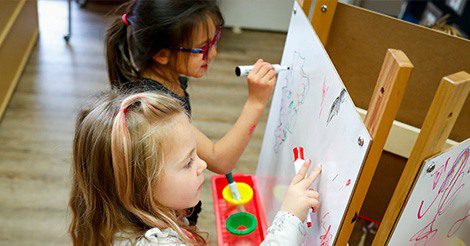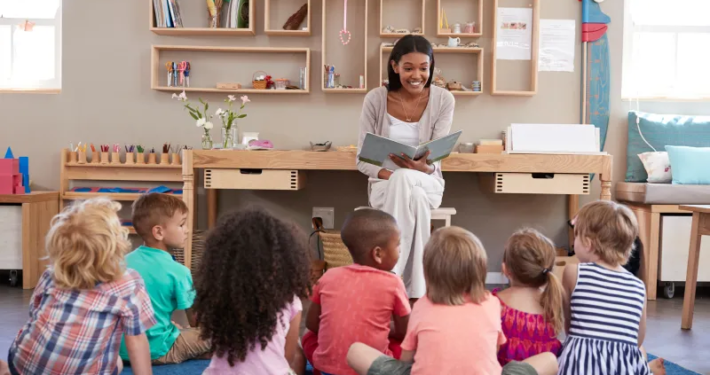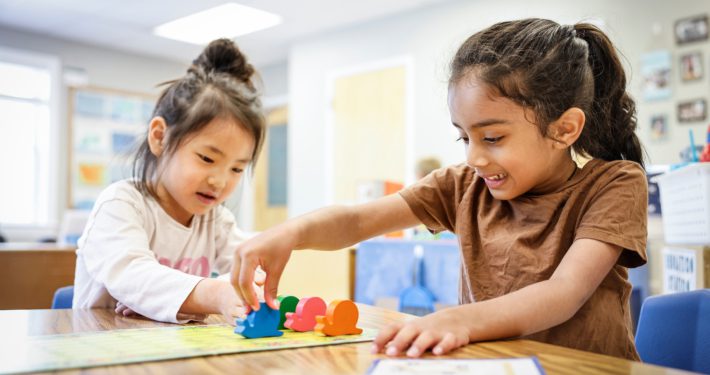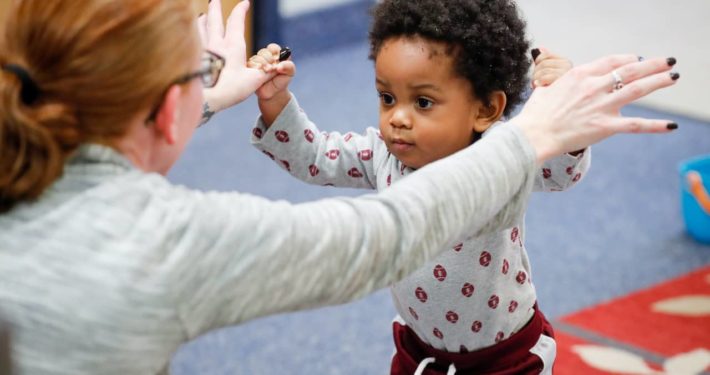Look What I Can Make
Drawing in preschool is not only an opportunity for children to develop creativity; it also supports their fine-motor skills, self-expression, communication, and pre-writing skills. As your child matures, he will progress from abstract, scribble drawing to more defined artwork with identifiable objects. When children first start drawing people, they typically only have a few features, maybe only a head with arms and legs or a face with eyes and a mouth. Later, the pictures are more proportional and detailed.
To help your child excel in this area, allow him lots of opportunities to freely draw with crayons, markers, and pencils on blank paper. Avoid coloring books because they can stifle children’s drawing skills. Also, be careful not to evaluate or judge your child’s drawing with value-laden words (i.e., “Good job” or “It’s beautiful”), as these can encourage perfectionism or self-doubt in your child. Instead, comment on your child’s work by asking him to describe it for himself (i.e., “Tell me about your picture” or “How does your picture make you feel?”). Remember, the experience of drawing is more important than how the final picture looks.
Age-appropriate Adaptations:
- Two-year-olds—Instead using coloring books, allow your child to create on blank paper. Offer your child tangible objects to look at and interact with while drawing. For example, give your child paper on a clipboard or easel and encourage him to draw or paint outside or next to a window. Offer him a mirror to look in as he draws a picture of himself. If he wants to draw a picture of his family, let him look at a family picture or photo album. Ask your child to share about his drawing. As he points to a scribble and names it (i.e., “This is the baby”) you can label that part of the picture with his permission. Ask questions like “What is the baby doing?” or “Who is with the baby?”
- Three-year-olds—At 3, your child should begin to make basic designs, such as lines, circles, crosses, and some letter-like shapes. She is more likely to freely share about her picture. Start to ask more detailed questions like “Where are [the people in the picture] at?” or “How is [a person in the photo] feeling?”
- Four-/Five-year-olds—Older children will start to add details to their pictures, such as objects for people and a setting. See if your child can tell a story using her picture. Ask questions like “What happened next?” or “Why do you think [character in story] did that?”
Skills Supported: fine motor skills (drawing, painting), creativity, answering questions, storytelling




